Who's Who? Naming Patterns - both a hindrance and a help
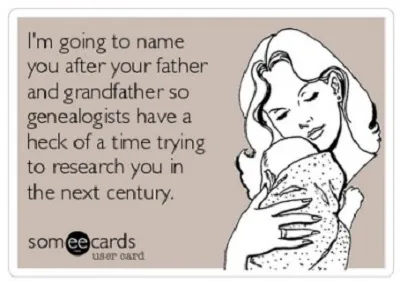
image source
This is perhaps a cautionary tale about never assuming you have found the right person and matched them to the right family.
There are many factors to take into consideration, but sometimes using the traditional naming pattern can certainly help you make a breakthrough back another generation or so.
This is a different exercise to that of looking out for spelling errors, etc., although they are important to be aware of when searching, too.
For the purposes of this quick guide, we'll be touching on various Western cultures.
- If a baby or child dies young, then the next born of the same sex may be given the same name; and if that second one also dies young the name may yet again be recycled.
- Occasionally you will find there are two of the same name in the same family (still alive), so until and unless you find a death record for the first of that name, never assume they did in fact die.
- You may find a whole cluster of people with the same name (and without the helpful addition of any middle names), especially in small villages - they may or may not be related. Tread carefully.
- The above may be especially prevalent if they are related and want to honour a patriarch (for example); with each subsequent generation doing the same.
- The name used by someone may not necessarily be their registered birth name. Look out for middle names being used as first names, and nicknames.
- If a child had been adopted (in or out) their original name may be quite different; or it may have been incorporated into their new name.
- Especially when it came to inheritance, it wasn't uncommon for an adult to adopt the surname of his in-law's family - e.g. to continue an aristocratic title.
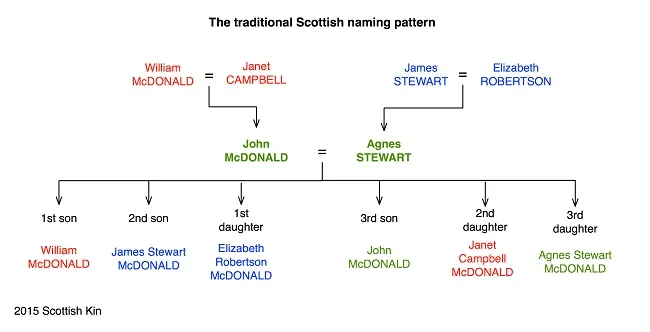
image source
Which shows the pattern being:
- The first son is named after the father’s father
- The second son is named after the mother’s father
- The third son is named after the father
- The first daughter is named after the mother’s mother
- The second daughter is named after the father’s mother
- The third daughter is named after the mother
And this pattern isn't strictly limited to the Scottish culture.
You might also strike a surname that has been given to a child as a first name (and I've seen some truly bad ones), which can be another excellent clue.
The patronomyics & matronomyics - family name affixes.
Before the above pattern example, or possibly including it, was something quite handy in that one could almost certainly inch back a little further in the tree by understanding the information presented.
We can see this quite easily in traditional names from Scotland, Ireland, Wales, and Scandanavian or European countries.
This is by no means a comprehensive list, but simply to give you an idea of how to interpret the clues.
Links in the biblography below give more comprehensive information.
| Prefix | m/f | example |
|---|---|---|
| O' | m | John O'Carroll - John, grandson of Carroll |
| Mc/Mac | m | William McAllister - William, son of Allister |
| Nic | f | female version of Mc/Mac |
| Fitz | m | Rory FitzHugh - Rory, (possibly illegitimate indicator) son of Hugh |
| verch/ferch | f | Angharad verch Owain - Angharad, daughter of Owain |
| ap/ab | m | Oswald ap Brian - Oswald, son of Brian |
| Suffix | m/f | example |
|---|---|---|
| Dattir/Dottir | f | Agnes Eriksdottir - Agnes, daughter of Erik |
| son | m | Philip Johnsson - Philip, son of John |

image source
Now, if we take a look at a typical English village, for example, where as I mentioned earlier there could be a number of people given the same name. We'll use the dreaded John Smith.
John Smith (1) has sons and calls his eldest John too. John (2) has sons and calls his eldest John, because tradition. John (3) has sons and ... you get the idea. BUT not only did John (2) continue the name, but John (1)'s other son Robert called his son John in honour of the family patriarch, so he can be John (4), and he has sons and calls one John (5), who in turn calls his son John (6) ...
...aaaaand John's (3) and (4) were born within a few months of each other!
Eek!
So then when you come across a scrap of information on a John Smith in the right village, about the right time frame, how can you know just which one it is?
Often you just can't. Sorry.
But sometimes you will get lucky, and find clues from 'sideways' sources which help to narrow down just which John you have in front of you.
E.g: You find the 1871 census which (luckily) shows John (3) living at home with his parents still, but with his new wife in tow - and doubly lucky is that she has a fairly unusual name (instead of being a Mary like both her mother and mother-in-law). Let's call her Philecia. Now you can check for a John/Philecia combination in further censuses, and those birth, death, marriage records we went through in earlier lessons.
Plus, we see that John (3) is a shoemaker, while the other Johns all appear to be farm labourers. Another clue, yay!
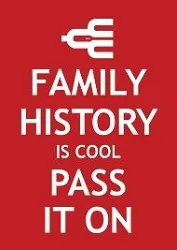
image source
If your ancestors emigrated, their names may have become anglesized, like in this example.
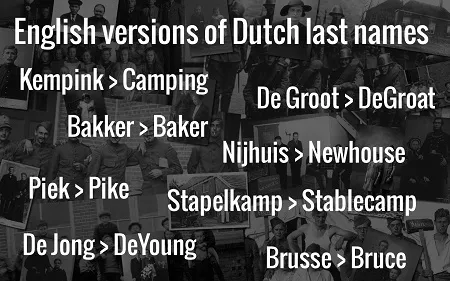
image source
It is also good to keep in mind, when switching between countries, that the same name could be written differently.
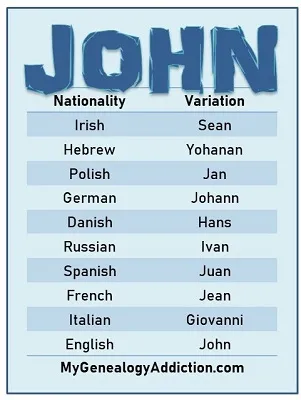
example
image source
And depending on how far back you get, you could see the names written in Latin.
Keep in mind, while you are ready to tear your hair out over this tangle of names you've got - if you aren't enjoying your research project any longer, either take a break or seek out help.
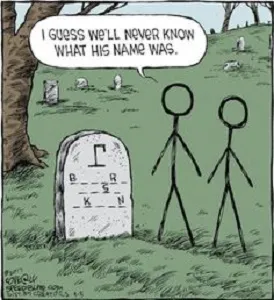
image source
*Bibliography:
https://scottishkin.com/the-traditional-scottish-naming-system
http://news.legacyfamilytree.com/legacy_news/2016/02/getting-real-with-naming-patterns.html
https://en.wikipedia.org/wiki/Patronymic#Europe
https://en.wikipedia.org/wiki/Matronymic#Europe
https://en.wikipedia.org/wiki/List_of_family_name_affixes
https://www.genealogy.com/articles/research/35_donna.html
If you'd like to catch up on the earlier lessons, here are the links to those posts:
Lesson 1
Lesson 2
Lesson 3
Lesson 4
Lesson 5
I'd love to hear about your own family tree research. :)
If you are interested in your own family history and want some help, I work for Steem & SBD. Check out my biz post here.
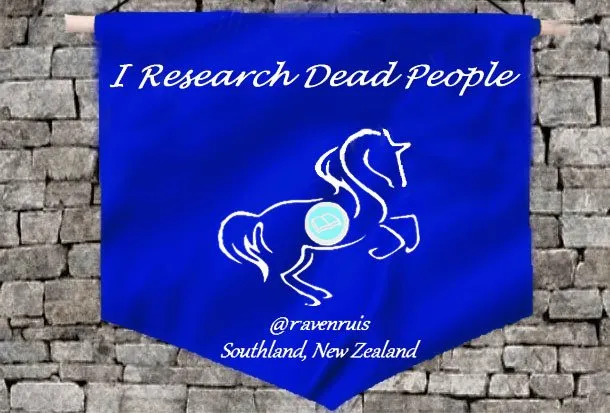


(extra tags: #blog #teamnz #nobidbot #minnowsupport #familyhistory )
